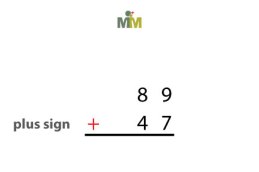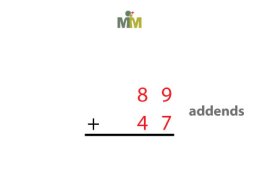As part of our primary education in mathematics, we have all been taught a standard method for adding two or more numbers together. Students learn how to add a series of whole numbers by following a step-by-step process until they can apply it without making an error. As part of the math education, it is also important that math students understand why this step-by-step process, the standard algorithm of addition, works.
First we need to set up our arithmetic expression of addition properly {number model}. In the blog, “The Vocabulary of Addition,” we learned the math terms for the different components of arithmetic expressions and equations involving addition. In that blog, the arithmetic expression and equation was presented in a horizontal format. Such expressions and equations can also be presented in a vertical format. This is the format that is used to teach and implement the standard algorithm of addition.

The plus sign, the symbol representing the operation of addition, is placed to the left of the addend at the bottom of the list.

The underline is used to separate the addends from the sum that is about to be calculated. It serves the same function as an equal sign.
When listing the addends associated with the arithmetic expression, the digits associated with the 1s column must line up vertically. The digits associated with the 10s column must also line up vertically. (See the blog “Decimals” for more details). This will make it easier to execute the algorithm properly. All math students should be encouraged to set up these addition problems properly and write them neatly to avoid confusion.
The most common way to gain insights into the validity of algorithms is to express its abstract concepts to the math student in visual concrete ways {visual model}. We’ll explore this concrete model of addition in Part II.



